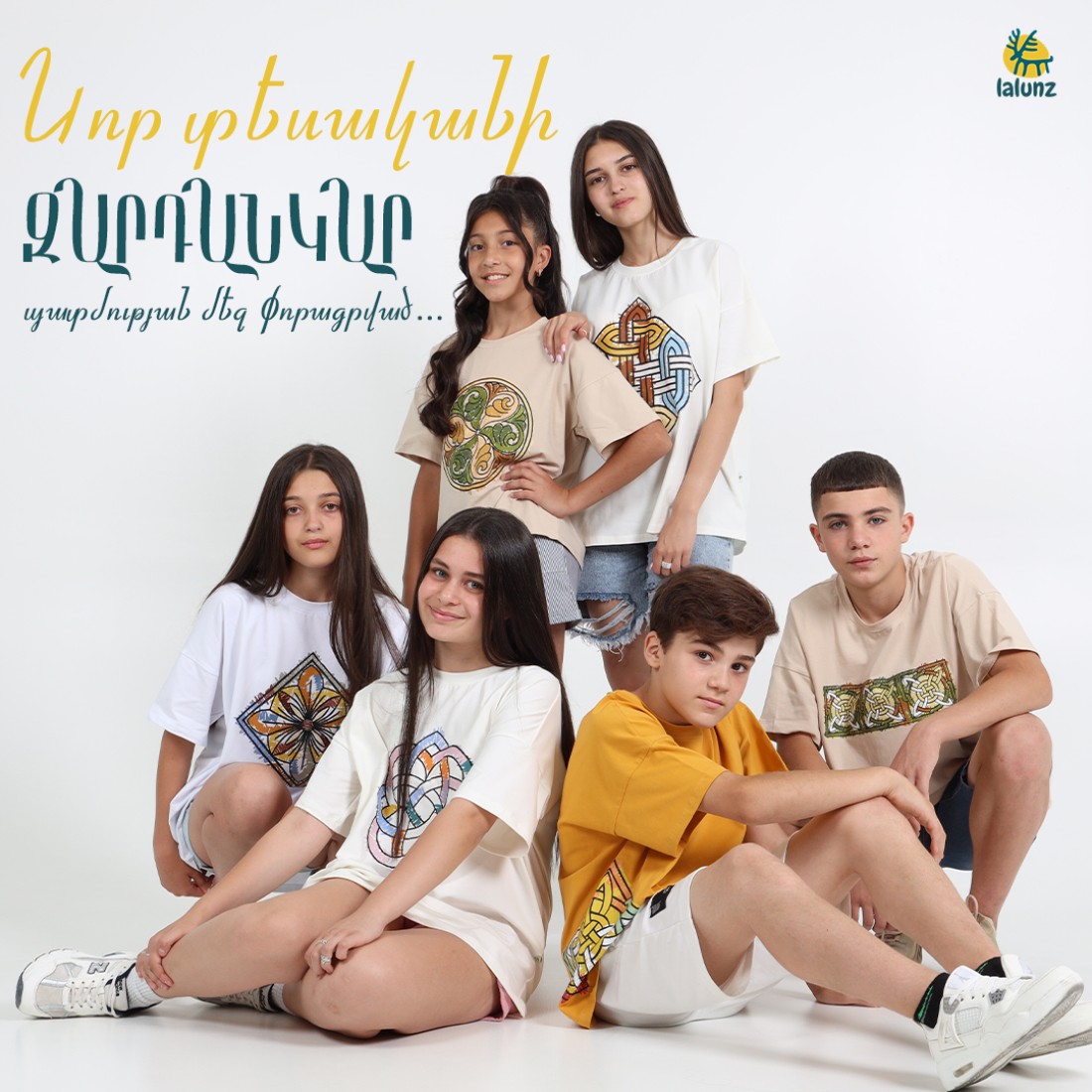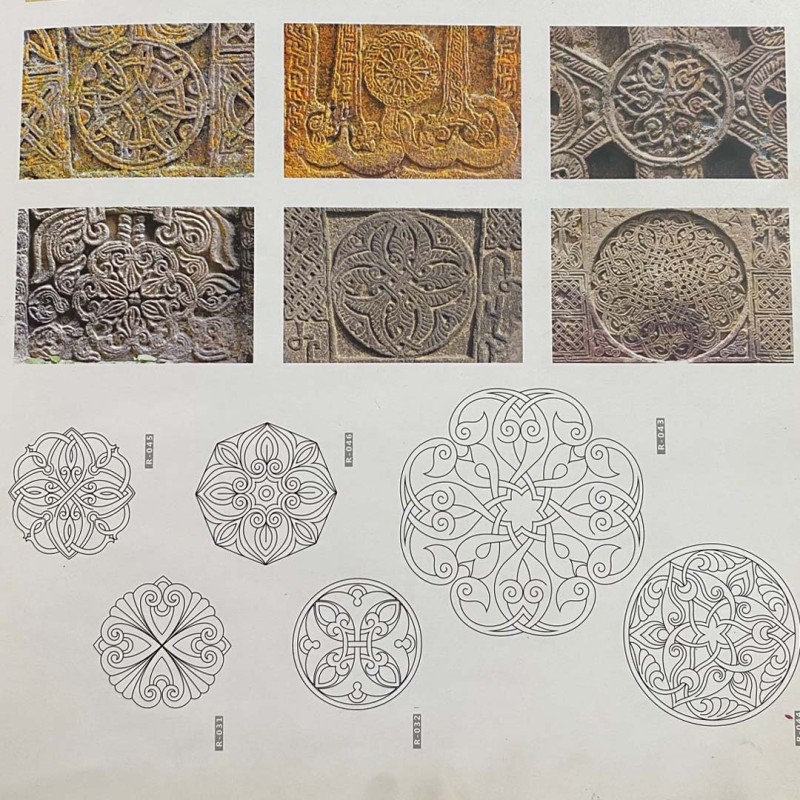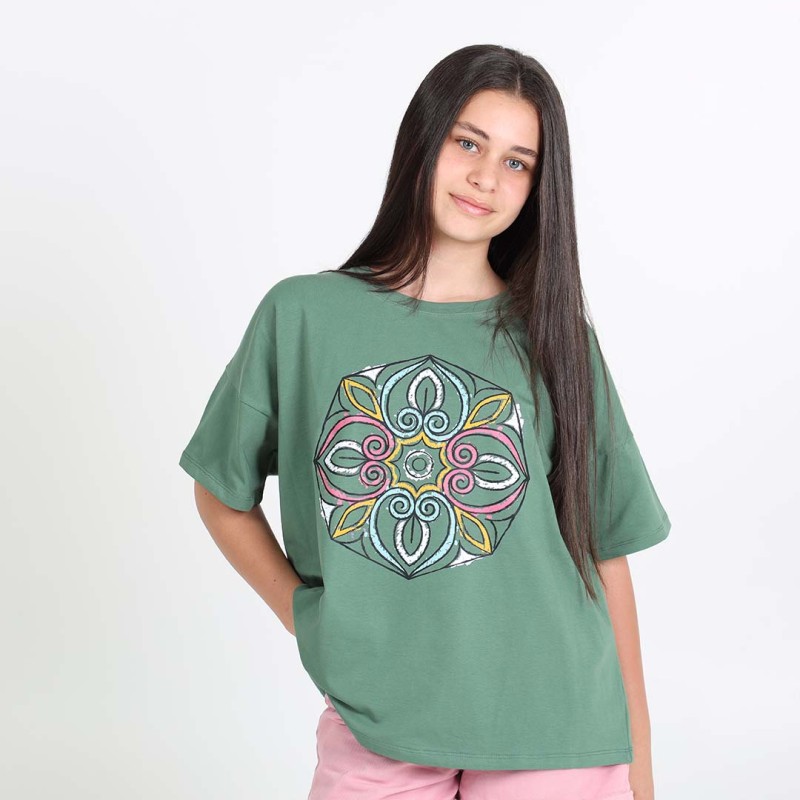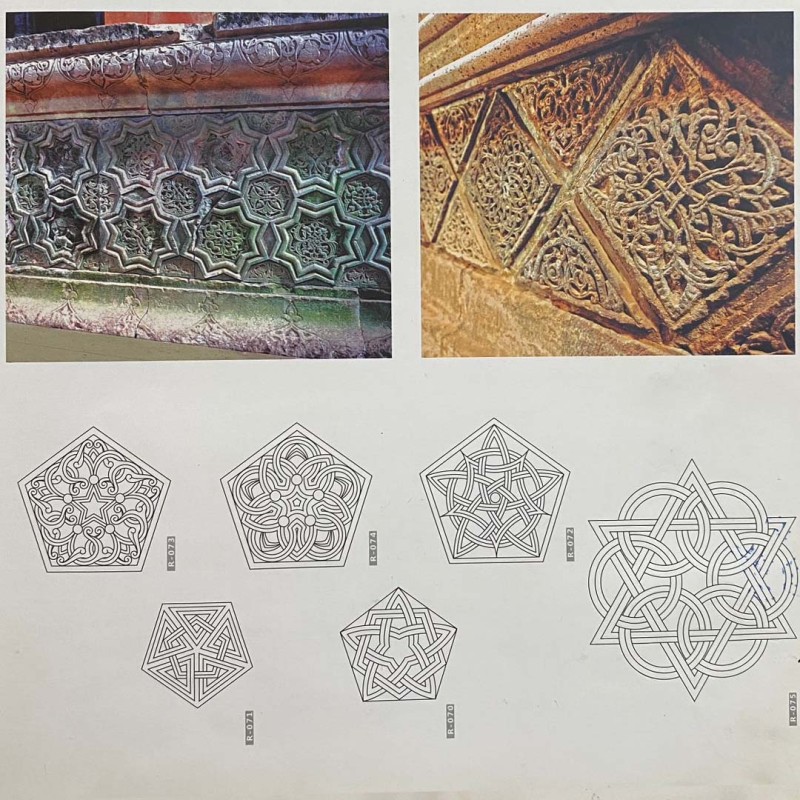
"Ornamental Art: curved in history" collection

Ornamental art holds a special place in the rich and famous centuries-old culture of the Armenian people. Ornamental art is one of the oldest but most vibrant art forms created by the Armenian people, which began in the primitive classless society, flourishes today and extends into the future. Ornamentation is also one of the most popular forms today. Its diverse motifs have decorated the human body, clothing, settlements, tools, historical and religious monuments, etc. since ancient times. At different times, due to different circumstances, the Armenian ornaments have received different meanings and roles, and were reproduced in their own way.

On the one hand, the motifs of ornamental art are based on the forces of nature and their organic and inorganic worlds, and on the other hand, the social concepts in their historical aspect.
1.The plant motifs occupy the major place in ornamental art of the Armenian people. That is why the ornaments often feature patterns of flowers and fruit organs.
The tree of life with its various motifs, forms and manifestations plays a key role in plant motifs.

2. In addition to or with the tree of life, the grain-seed motifs are one of the most important organs among the motifs of ornamental art, considered a symbol of fertility. Ornaments with apple and pomegranate motifs play a key role in this subsection.
3. The 4 elements in the ornaments: earth, water, air, sun. They are directly related to the grain and seed motifs. For a grain to sprout and develop, it must be in the soil and nourished by water, sunlight and air. Therefore, the patterns characterizing these elements are found in the Armenian ornamental art in different manifestations.
4. reflection of parent-child, child and related motifs in the ornaments.
The most complex type of ornamentation is the tree of life, which sprouts from the grain, gives a root, a stem, a branch, a flower and bears fruit thanks to 4 elements.
The concept of fertility cannot be realized without the intervention of people and animals of different sexes. It is this phenomenon that underlies the motifs of this group of ornaments.

5. The other group consists of ornamental patterns, reflecting patrimonial relations and telling the story of the birth. They tell how ancient clans and tribes were organized and ruled.
6. Entrances, sepulchres, domes and chapels are some of the most complex decorative motifs associated with Armenian craftsmanship and reflecting the characteristics of the architecture of the period.
7. By studying the ornaments we can get an idea of the life of the Armenian people, because many ornaments reflect festivals, rituals, theatrical scenes.
8. The ornamental art also contains rich evidences of mythology, struggle against enemy forces for the sake of material goods.

Inspired by the motifs of ancient Armenian ornaments, the Lalunz Collection "Ornamental Art: curved in history" is intended to reveal the value and make recognizable the ancient art and culture of the Armenian people.
